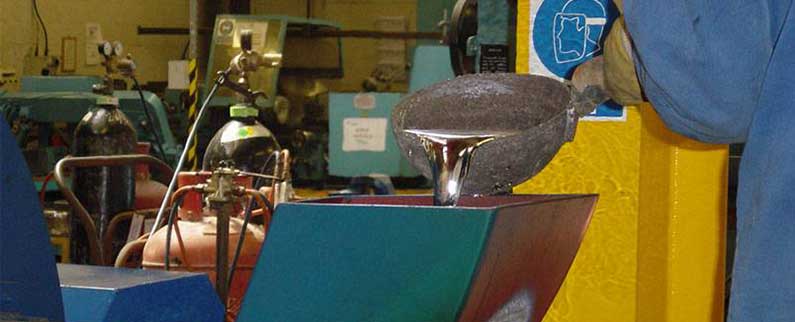Casting, or reforming materials by heating, melting and molding, can be traced back in history six thousand years. As civilization progressed and the use of metals became more advanced, the technology of casting metals advanced as well. As foundry industries began to demand higher yields and better physical properties from cast metal products, casting processes became more specialized.
The centrifugal casting method was developed after the turn of the 20th century to meet the need for higher standards.
Spinning molds generate centrifugal force on molten metal to position the metal within a mold. As the molten metal solidifies from the outside in, a casting with dense, close grain structure is created. As a result of close grain structure the centrifugal process offers products with better physical properties than castings made using the static casting method. Other advantages of products made by the centrifugal process are:
- Smoother Surface
- Lighter Weight
- Thinner Walls
Combining proper mold design, mold coatings, mold spinning speeds, pouring speeds, cooling rates and metal chemistry results in castings with higher yields, fewer impurities and greater strength.
The Process
Mold Preparation Phase
1. Chemically treat mold surface so mold coating will stick well.
2. Heat mold to a pre-determined temperature.
3. Spray mold with selected coating.
Casting Phase
4. Bring mold up to process speed.
5. Move pour runner into position.
6. Begin pouring metal at a pre-determined rate.
Cooling Phase
*If necessary, water is used to maintain proper mold temperature.
Extraction Phase
7. Insert pipe puller and lock against pipe I.D. Pull to extract.
Process Animation
Requires Flash
